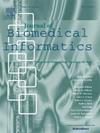Interpretable deep neural networks for advancing early neonatal birth weight prediction using multimodal maternal factors
IF 4.5
2区 医学
Q2 COMPUTER SCIENCE, INTERDISCIPLINARY APPLICATIONS
引用次数: 0
Abstract
Background:
Neonatal low birth weight (LBW) is a significant predictor of increased morbidity and mortality among newborns. Predominantly, traditional prediction methods depend heavily on ultrasonography, which does not consider risk factors affecting birth weight (BW).
Objective:
This study introduces a robust deep neural network for a clinical decision-support system designed to early predict neonatal BW, using data available during early pregnancy, with enhanced precision. This innovative system incorporates a comprehensive array of maternal factors, placing particular emphasis on nutritional elements alongside physiological and lifestyle variables.
Methods:
We employed and validated various traditional machine learning models as well as an interpretable deep learning model using the TabNet architecture, noted for its proficient handling of tabular data and high level of interpretability. The efficacy of these models was evaluated against extensive datasets that encompass a broad spectrum of maternal health indicators.
Results:
The TabNet model exhibited outstanding predictive capabilities, achieving an accuracy of 96% and an area under the curve (AUC) of 0.96. Significantly, maternal vitamin B12 and folate status emerged as pivotal predictors of BW, emphasizing the crucial role of nutritional factors in influencing neonatal health outcomes.
Conclusions:
Our results demonstrate the substantial benefits of integrating multimodal maternal factors into predictive models for neonatal BW, markedly enhancing the precision over traditional AI methods. The developed decision-support system not only has a possible application in prenatal care but also provides actionable insights that can be leveraged to mitigate the risks associated with LBW, thereby improving clinical decision-making processes and outcomes.

利用多模态母体因素推进新生儿早期出生体重预测的可解释深度神经网络
背景:新生儿低出生体重(LBW)是新生儿发病率和死亡率增加的重要预测因子。传统的预测方法主要依赖于超声检查,没有考虑影响出生体重的危险因素。目的:本研究引入了一种鲁棒深度神经网络,用于临床决策支持系统,该系统旨在利用妊娠早期的可用数据,提高新生儿体重的准确性。这个创新的系统结合了一系列全面的母体因素,特别强调营养因素以及生理和生活方式变量。方法:我们采用并验证了各种传统的机器学习模型,以及使用TabNet架构的可解释深度学习模型,该模型以其对表格数据的熟练处理和高水平的可解释性而闻名。这些模型的功效是根据包含广泛的孕产妇保健指标的广泛数据集进行评估的。结果:TabNet模型具有较强的预测能力,准确率达96%,曲线下面积(AUC)为0.96。值得注意的是,母亲维生素B12和叶酸状态成为体重的关键预测因素,强调了营养因素在影响新生儿健康结局中的关键作用。结论:我们的研究结果表明,将多模态母体因素整合到新生儿体重预测模型中具有实质性的好处,显著提高了传统人工智能方法的精度。开发的决策支持系统不仅在产前护理中有可能应用,而且还提供了可操作的见解,可以用来减轻与LBW相关的风险,从而改善临床决策过程和结果。
本文章由计算机程序翻译,如有差异,请以英文原文为准。
求助全文
约1分钟内获得全文
求助全文
来源期刊

Journal of Biomedical Informatics
医学-计算机:跨学科应用
CiteScore
8.90
自引率
6.70%
发文量
243
审稿时长
32 days
期刊介绍:
The Journal of Biomedical Informatics reflects a commitment to high-quality original research papers, reviews, and commentaries in the area of biomedical informatics methodology. Although we publish articles motivated by applications in the biomedical sciences (for example, clinical medicine, health care, population health, and translational bioinformatics), the journal emphasizes reports of new methodologies and techniques that have general applicability and that form the basis for the evolving science of biomedical informatics. Articles on medical devices; evaluations of implemented systems (including clinical trials of information technologies); or papers that provide insight into a biological process, a specific disease, or treatment options would generally be more suitable for publication in other venues. Papers on applications of signal processing and image analysis are often more suitable for biomedical engineering journals or other informatics journals, although we do publish papers that emphasize the information management and knowledge representation/modeling issues that arise in the storage and use of biological signals and images. System descriptions are welcome if they illustrate and substantiate the underlying methodology that is the principal focus of the report and an effort is made to address the generalizability and/or range of application of that methodology. Note also that, given the international nature of JBI, papers that deal with specific languages other than English, or with country-specific health systems or approaches, are acceptable for JBI only if they offer generalizable lessons that are relevant to the broad JBI readership, regardless of their country, language, culture, or health system.
 求助内容:
求助内容: 应助结果提醒方式:
应助结果提醒方式:


